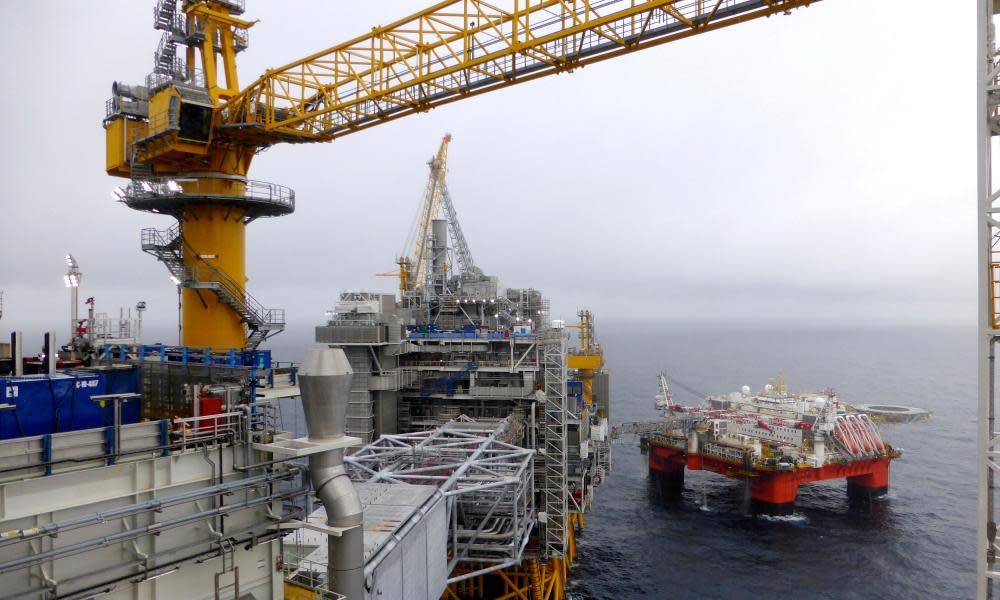Great Australian Bight oil industry would need decades of subsidies, report warns

The South Australian government needs to prepare itself for decades of subsidies if it wants to develop an offshore oil and gas industry in the Great Australian Bight, according to a new report.
Analysis by the progressive thinktank the Australia Institute draws on industry modelling to argue South Australia is unlikely to receive any noticeable benefit from tax payments as a result of oil and gas production in the Bight, with the benefits mostly flowing to the Commonwealth. It says in the exploration phase, production would be minimal, paying no royalties or taxes.
It also argues the employment effects would be modest. Drawing on the experience with the north west shelf development in Western Australia, the analysis notes employment peaked at 1,660 employees and then tracked down to less than 1,500.
Related: Great Australian Bight: parties soften stance as voters protest over drilling
The report argues a new oil project in the Bight would be smaller in scale, with 1,500 jobs at the peak. It notes industry modelling puts that figure even lower, estimating an average of 826 jobs over the project lifespan.
It also highlights the environmental risks. Comparing again with WA, the report notes the Bight’s waters are unusually deep water for oil drilling, with ocean depths of approximately 1,000–2,500 metres, compared with the gas fields in the west with depths between 125 and 131 metres.
“Such deep water both increases costs for producers and increases environmental risks,” the report says. “Specialised ultra-deepwater equipment would be required to produce oil in the Bight and one of the world’s worst oil disasters, the Deepwater Horizon oil spill in the Gulf of Mexico, occurred in water of similar depth”.
“A major oil spill in the Bight could impact other industries on the coasts of South Australia, Victoria and Tasmania such as fishing, aquaculture and tourism, which are major industries for many coastal towns”.
It says a major oil spill could damage the environment in South Australia, Victoria and Tasmania, and between these three states, up to 27,022 tourism, aquaculture and fisheries jobs could be threatened.
The Norwegian company Equinor is planning exploratory drilling for oil and gas in the Bight in late 2020. The company received two offshore leases from its partner BP in 2017.
Related: Drilling in the Great Australian Bight is not worth the risk | Rick Steiner
The company’s proposed Stromlo-1 well would be located 372km off the coast of SA and 476km west of Port Lincoln. Drilling of the proposed Stromlo-1 well will begin in the summer of 2020-21 if it receives all necessary regulatory approval.
Equinor has published voluntarily its draft environment plan concluding that drilling can be done safely but environment groups have called for the federal government to reject the development. The proposal has already triggered protests in SA.
The federal resources minister, Matt Canavan, has argued encouraging offshore oil exploration is a national priority so Australia can be self-reliant with fuel supply and not be exposed to volatile international markets.
Canavan said last year it was important not to let “activists” prevent projects from proceeding. “You have a bunch of activists running around saying we shouldn’t explore in the Great Australian Bight”.
“If we let these activists win, that would confine Australians to be dependent on overseas oil prices — not something … in the long-term interests of Australia”.
Polling undertaken earlier this year suggests a majority of Australians nationally (60%) are concerned about drilling in the Bight. Community opposition was higher in South Australia (68%).

 Yahoo News
Yahoo News 
